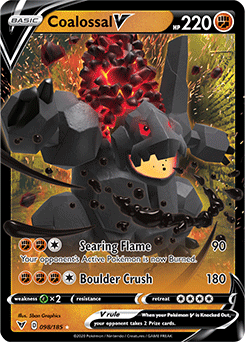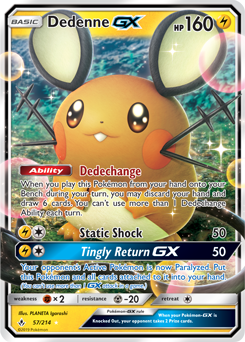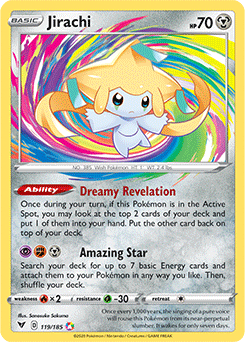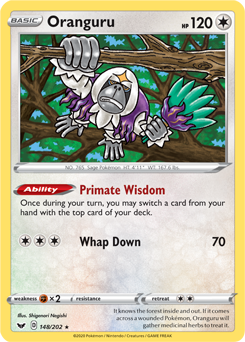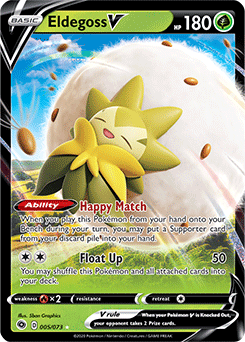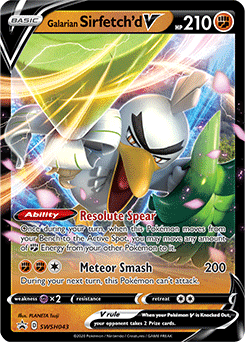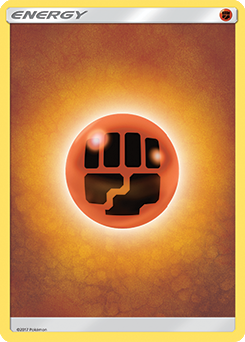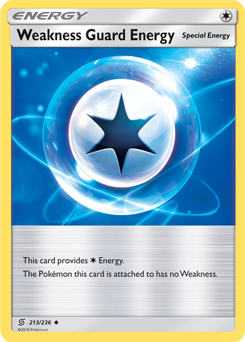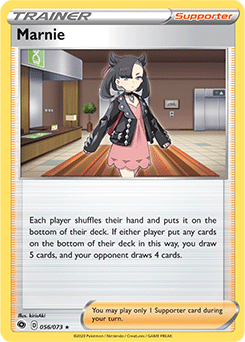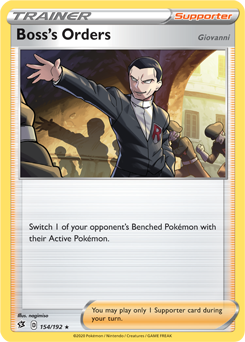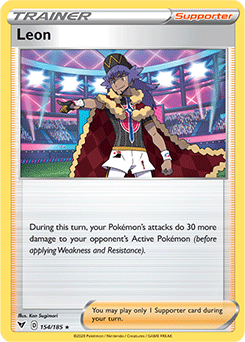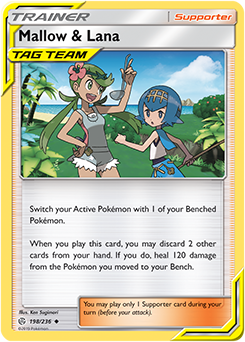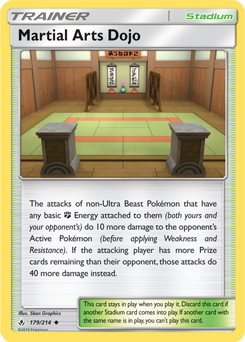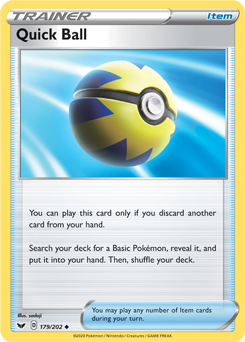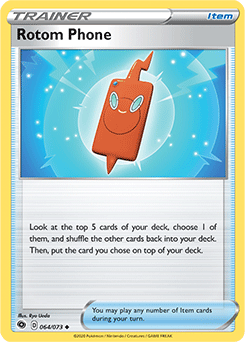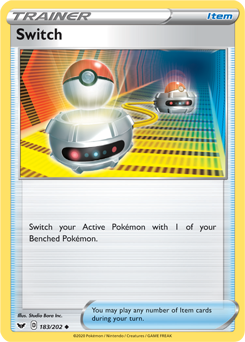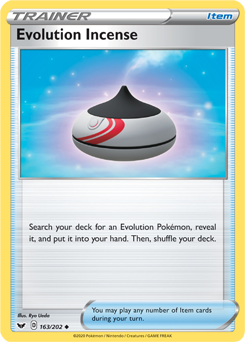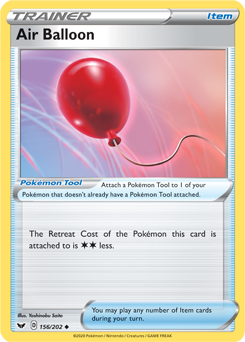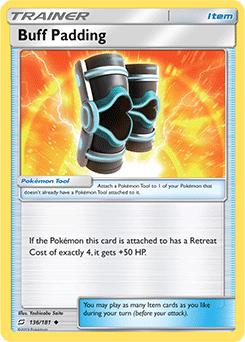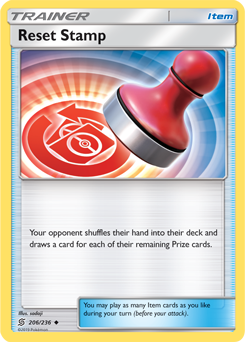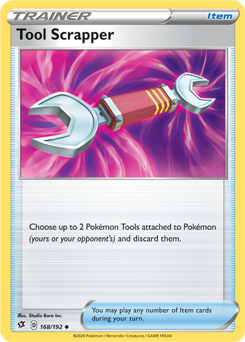One of the best ways to better understand the Pokémon Trading Card Game is to deconstruct good decks to see what makes them tick. In this second episode of Top Deck Academy, you’ll learn how to build an effective deck around a powerful Pokémon VMAX. You can read the transcript here as you watch to revisit certain key points and get a closer look at the cards mentioned in the episode.
Remember that a new episode of Top Deck Academy comes out every week, and you can watch the entire series here on Pokemon.com or on YouTube and Twitch.
Notice: If you click on the YouTube video above, you will leave Pokemon.com. The Pokémon Company International is not responsible for the content of any linked website that is not operated by The Pokémon Company International. Please note that these websites' privacy policies and security practices may differ from The Pokémon Company International's standards.
Hey, Trainers! Welcome to Top Deck Academy. I’m Ellis Longhurst, the Pokémon Trading Card Game player and caster. Like many Pokémon TCG Trainers, I love to explore new card combinations to try to unlock winning strategies. And there’s no better place to look for these new card combinations than the newest Pokémon Trading Card Game expansion, Sword & Shield—Vivid Voltage. This set has over 200 new cards that players can use to enhance their existing decks or build a new deck from scratch.
Now, if you’re brand new to the Pokémon TCG or still learning the game, I’d highly recommend you jump over to tcg.pokemon.com/how-to-play to start your Pokémon journey with our how-to-play videos.
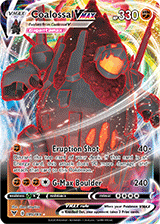
All right, in this episode of Top Deck Academy, I’m going to take a look at one of the powerful new Pokémon from the Sword & Shield—Vivid Voltage expansion: Coalossal VMAX. And we’re also going to have a look at the plethora of new Trainer cards, Energy cards, and Pokémon that can be used to enable Coalossal VMAX to shine.
Firstly, we’ll take an in-depth look at Coalossal VMAX. Secondly, we’ll explore some of the ways that we can power up Coalossal VMAX quickly and get it ready for action. Next, we’ll have a look at ways that we can increase Coalossal VMAX’s damage that it does to the opponent’s Active Pokémon. And then we’ll flip it around and have a look at some ways that we can reduce the damage that Coalossal VMAX takes from the opponent’s Active Pokémon’s attacks. And finally, we’ll shine a spotlight on some of the other Fighting-type Pokémon from Sword & Shield—Vivid Voltage expansion that can enable Coalossal VMAX to win battles.
All right, you ready to go? Let’s rock.
Coalossal VMAX
Sword & Shield—Vivid Voltage brings a bunch of cool new Pokémon to the Pokémon TCG, but Coalossal VMAX stands out from the crowd for a number of reasons. This Pokémon is colossal both in name and in nature. It has a huge number of Hit Points, and its G-Max Boulder attack really packs a punch. Coalossal VMAX is a Fighting-type Pokémon, which means it does extra damage to Pokémon like Eternatus VMAX and Boltund V, which both have a weakness to Fighting. These Pokémon are both very popular in competitive play, and Coalossal VMAX can knock them out in one hit. All right, let’s now take a look at ways that we can power up Coalossal VMAX.
Powering Up Coalossal VMAX
Coalossal VMAX can do loads of damage to the opponent’s Pokémon with its G-Max Boulder attack, but look at the Attack Cost: four Energy. Remember, one of the rules of the Pokémon Trading Card Game is that players can only attach one Energy card to their Pokémon per turn. Coalossal VMAX could be knocked out before it even gets to use its G-Max Boulder attack. Fortunately, Trainer cards like the new Supporter card Bea enable players to attach more than one Energy card to their Pokémon per turn.
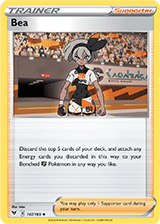
In competitive play, attaching more than one Energy card is called “accelerating Energy.” Bea is a pretty exciting card which reads, “Discard the top 5 cards of your deck and attach as many Energy as you find there to your Benched Fighting Pokémon.” If you’re worried about discarding too many of your key resources using Bea, Coalossal VMAX offers a more controlled approach to accelerating Energy. Its Eruption Shot attack deals 40 damage to the opponent’s Active Pokémon and discards the top card of the deck. If that card is an Energy card, Eruption Shot does 90 more damage, and you can attach that Energy to Coalossal VMAX.
Now, some of the popular ways to ensure that an Energy card is on the top of the deck include using Oranguru’s Primate Wisdom Ability to exchange the top card of the deck with a card in your hand, playing Rotom Phone to search the top five cards of the deck and put one on top, and using Jirachi’s Dreamy Revelation Ability to look at the top two cards of the deck, put one in your hand, and put one back on top. Now, Jirachi is one of the new amazing Pokémon from the Sword & Shield—Vivid Voltage expansion. It is a great way to draw an extra card every turn, so I wouldn’t be surprised to see it popping up in a variety of decks.
All right, let’s have a look at some ways that we can increase the damage that Coalossal VMAX does to the opponent’s Active Pokémon.
Increasing Damage
Coalossal VMAX can deal even more damage to the opponent’s Pokémon by using the Supporter card Leon. On the turn that you play Leon, the damage done by Coalossal VMAX is increased by 30, and if you play Leon while you have the Stadium card Martial Arts Dojo in play, Coalossal VMAX can deal 280 or even 310 damage to the opponent’s Pokémon in one hit. Leon is a great card to consider adding to any deck that is designed to do heavy damage to the opponent’s Pokémon. If you’re a fan of Leon, consider checking out the Charizard from Sword & Shield—Vivid Voltage. The champion and his partner make for a powerful team. All right, we’ve discussed how Leon can be used to increase the damage done by Coalossal VMAX.
Let’s now consider ways that we can reduce the damage that Coalossal VMAX takes from the opponent’s Pokémon’s attacks.
Reducing Damage Taken
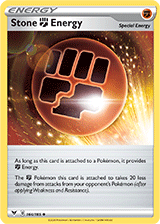
It’s important to make sure that Coalossal VMAX can do loads of damage to the opponent’s Active Pokémon, but it’s just as important to make sure that it can stay in the battlefield for as long as possible. Fortunately, Sword & Shield—Vivid Voltage includes a Special Energy called Stone Fighting Energy that reduces the damage from attacks by opponent’s Pokémon by 20, but the effect can only be used by Fighting-type Pokémon. Imagine how difficult it would be to knock out a Coalossal VMAX if it had four of these Stone Fighting Energy attached. Let’s take a look at some of the other Fighting-type Pokémon from Sword & Shield—Vivid Voltage that can use Stone Fighting Energy to its full effect.
Additional Pokémon
Coalossal VMAX is not the only Fighting-type Pokémon introduced to the game by Sword & Shield—Vivid Voltage. The set also introduces Galarian Sirfetch’d V, which is a powerful attacker and the perfect partner for Coalossal VMAX. Its Meteor Smash attack deals 200 damage to the opponent’s Active Pokémon for a cost of only three Energy, and it can be powered up in a pinch by its Resolute Spear Ability, which enables players to move as many Fighting Energy on the board onto Galarian Sirfetch’d V when it moves into the Active Spot.
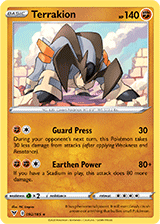
Now, the rise in popularity of Pokémon that are immune to damage from Pokémon V and VMAX, such as Altaria and Zamazenta V, means it’s important to include a range of Pokémon alongside Coalossal VMAX in your deck. Sword & Shield—Vivid Voltage includes a number of powerful Fighting-type Pokémon that you could include in your deck. For example, Hitmontop can deal 130 damage to the opponent’s Active Pokémon if you play Bea that turn. Or you could include Terrakion, which deals 160 damage to the opponent’s Active Pokémon if you have a Stadium card in play. Or perhaps Zygarde, which deals 160 damage to the opponent’s Active Pokémon if you have more Prize cards remaining than they do.
OK, let’s recap everything that we’ve learned. Sword & Shield—Vivid Voltage brings a lot of new and exciting cards to the Pokémon Trading Card Game, especially if you’re a fan of Fighting-type Pokémon. The expansion brings us Coalossal VMAX, a new Supporter card—Bea—which enables players to accelerate Energy onto their Fighting-type Pokémon, a new Supporter card—Leon—which increases the damage of any Pokémon’s attacks, a new Special Energy card—Stone Fighting Energy—which reduces the damage taken by Fighting-type Pokémon, and also a range of powerful Fighting-type Pokémon like Galarian Sirfetch’d V and Terrakion.
Thanks for watching this episode of Top Deck Academy. Have you built a Coalossal VMAX deck? Which cards did you include, and what are your tips for battle? All right, thanks, Trainers. Until next time!
Trainers, it’s extra credit time. Here is the full deck list for the Coalossal VMAX deck:


